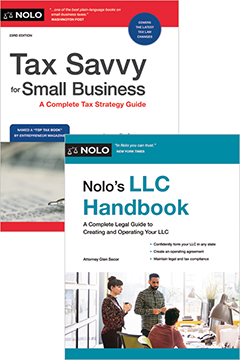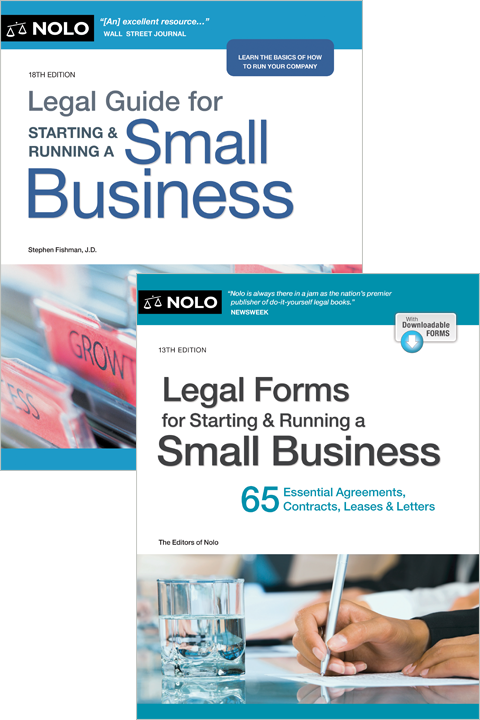You don't have to file any paperwork to establish a partnership—you can create one simply by agreeing to go into business with another person. Find out the steps you need to take to be ready to open, including state-specific requirements for Florida, New York, and Texas.
A partnership (also known as a "general partnership") is an informal business structure consisting of two or more people. You don't have to file paperwork to form a partnership—you create a partnership when you agree to go into business with another person.
While you can form a partnership without formally filing or registering the entity, partnerships must comply with licensing and tax requirements that apply to all businesses. In addition, every partnership can benefit from a partnership agreement and business insurance.
Let's look at the five steps you must generally follow to form a partnership.
1. Choose a Partnership Name
In most states, partnerships can use either the last names of the individual partners or a trade name (also known as a "fictitious business name," an "assumed name, " or a "DBA"). If you plan to use a trade name, it can't be the same as or too similar to any name that's already registered with the state.
For example, suppose Joey Potter and Dawson Leery want to open a seafood restaurant called "Capeside Core Four Eats." But there's already another seafood restaurant a few blocks away called "Capeside's Four Core Eatery." Because Joey and Dawson's restaurant would have a very similar name to the restaurant that already exists, they should probably choose a different name.
Before you land on a business name, you should make sure it's available for you to use. For example, you can search the following state databases for registered business names:
- Florida: the Division of Corporations entity search database
- New York: the Department of State corporation and business entity database; and
- Texas: the Comptroller of Public Accounts taxable entity search database and the Secretary of State SOSDirect business service.
For tips on choosing a unique and legally compliant business name, check out our FAQ on choosing a business name.
2. Register Your Trade Name (DBA)
You can't use a trade name to sell your services or goods until you fulfill your state and local registration requirements. Typically, you must file a name registration with the state or at the clerk's office in your city or county.
When registering your trade name, you might be required to publish a notice in a local newspaper—your local agency will likely provide a list of approved publications. After the required time for publication (typically around 4 weeks), you must notify the licensing agency that you fulfilled the publication requirement.
Check with your state and city governments for specific requirements.
You Must Register Your DBA in Florida
If you use a business name that's different from the last names of the individual partners, Florida requires you to register the trade name. In Florida, a trade name is known as a "fictitious business name" (FBN). You must register your FBN with the Division of Corporations before you open for business. (Fla. Stat. § 865.09 (2023).)
You can complete and mail an Application for Registration of Fictitious Name to register your FBN. You can also register online using the FL Fictitious Name Registration.
You'll need to publish the FBN in a newspaper in the county where you'll be located. You'll certify that you've published the notice when you apply for your FBN.
As of 2023, the filing fee is $50. You must renew your registration every five years.
You Must Register Your DBA in New York
If you use a business name that's different from the legal names of the individual partners, New York requires you to register the trade name. New York refers to a trade name as an "assumed business name." You must file a certificate of assumed name—often called a "business certificate"— with the county clerk's office in the county where your business is located. (N.Y. Gen. Bus. Law § 130 (2023).)
The appropriate form for filing an assumed business name in New York is available from your county clerk's office. The filing fee varies by county. Contact your county clerk's office for more information, including the appropriate form and filing fee.
You Must Register Your DBA in Texas
If you use a business name that's different from the last names or other legal names of the individual partners, Texas requires you to register the trade name. You'll need to submit an assumed name certificate to the county clerk's office in the county where your business is located. (Tex. Bus. & Com. Code §§ 71.001 and following (2023).)
Contact your county clerk's office for information about what form you should file and the associated filing fee. You'll probably need to renew your certificate every 10 years.
3. Draft and Sign a Partnership Agreement
A partnership agreement isn't required to establish a partnership. However, having one is important to avoid misunderstandings between you and your partners. Even well-intentioned, honest partners can find themselves in a legal battle if they don't have a well-drafted partnership agreement.
Here's a list of some of the items that you should cover in your partnership agreement:
- each partner's contribution to the partnership
- the allocation of profits, losses, and draws
- each partner's authority and management duties
- voting rules for decision-making
- how to admit new partners
- what happens upon the bankruptcy, withdrawal, or death of a partner (called "buy-sell provisions"), and
- how to resolve disputes.
You can always revise your agreement at a later date should circumstances or conditions change. For help drafting your agreement, see our article on creating a partnership agreement.
4. Comply with Tax and Regulatory Requirements
Partnerships must meet the licensing and tax registration requirements that apply to any new business.
Employer identification number (EIN): The IRS requires every partnership to obtain an EIN, regardless of whether the partnership has employees. An EIN is a nine-digit number issued by the IRS for tax reporting purposes. You can register for an EIN for free at the IRS website.
Business licenses: Your business might need to obtain business or professional licenses depending on the type of business activity you're engaged in. For example, if your partnership offers accounting services, you must comply with state licensing requirements for accountants.
State tax registration: Depending on your state and your business activities, you might be required to report and pay taxes, such as sales tax and use tax. Check with your state's tax agency for more information and for registration.
Employer registration: If you plan on hiring employees, check the employer registration requirements in your state. In most states, you must pay unemployment and workers' compensation taxes. For more information about the steps you must take as a new employer, see our article on hiring your first employee.
In addition, local regulations—including licenses, building permits, and zoning clearances—might apply to your business. You'll need to check with your city and county governments for more information. For additional guidance, read our article about the legal requirements for starting a small business.
Let's look at some state-specific requirements and resources:
- Florida: You'll likely need to obtain a business license (called a "business tax receipt") from the city or town you operate in. The Florida Department of Business and Professional Regulation (DBPR) provides a database of every occupation that requires a license. Some other professions such as health care and law are regulated by independent agencies. The Department of State's Division of Library and Information Services website provides a list of state departments and agencies as well as general information on business licenses.
- New York: You don't need a general business license at the state level but you might need a local (city or county) operating license. So you should check with your local government about these requirements. New York provides a comprehensive licensing website with information about the different occupational and professional licenses that your business might need. You can also review the New York Business Express's checklist and starter guide for more guidance.
- Texas: A general business license isn't required in Texas but you might need other licenses and permits depending on your activities and location. Texas provides a business licenses and permits guide to help you determine what license or permit you might need for your business.
For more information, see our state guide to business licenses.
5. Obtain Business Insurance
Because partners of a partnership are personally liable for all debts and obligations of the business, a general business liability insurance policy might be your only financial protection against unforeseen events. Having adequate business liability insurance can protect your business and personal assets if your business is sued.
Your state might require your business to have some forms of insurance, depending on your industry and number of employees. For example, New York requires employers to obtain workers' compensation insurance, but Texas doesn't. In Florida, construction businesses with one or more employees and non-construction businesses with four or more employees are required to have workers' comp insurance.
Additionally, if you use vehicles in your business, almost every state—including Florida, New York, and Texas—requires you to have auto insurance, usually commercial auto insurance.
To learn more about the different policies, read our article on what types of insurance your small business might need.
Additional Guidance on Forming a Partnership
To learn more about partnerships (including the difference between a general partnership and a limited partnership), see our section on partnerships.
For information on your state's registration requirements, check out our state guide on starting a business.
If you have business experience and face simple legal requirements, you can probably start your partnership on your own. But if you and your partners have any disagreements over how your partnership should be run or you run into obstacles applying for local licenses and registrations, you should talk to a business attorney. They can help you draft a partnership agreement, apply for local licenses and permits, and comply with employment and tax laws.



